The Tiger had better armour than contemporary Panzers, able to resist impacts that would have destroyed them. But if the incoming projectile did not pass through the armour, its kinetic energy did. Items attached to the inside of the wall near the point of impact could fly off at high speed, injuring the crew. More often, the electrical components would stop working.
The first attempt to deal with this problem was a reorganisation of the turret's electrical wiring. We don't know when this took place, but it was somewhere about the 20th turret, and the improved layout is present in the surviving Tiger "712" which is the 31st Tiger.
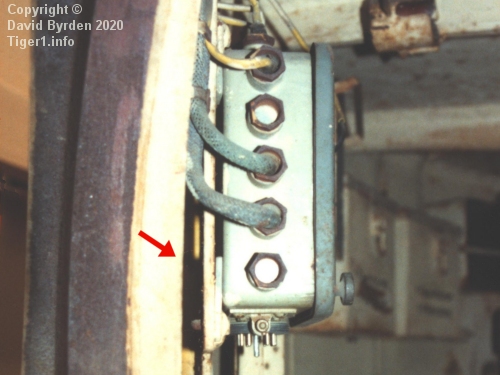
The turret junction box "Kasten 5c" was no longer bolted to the wall but instead was put on a metal scaffold. In this photo, the side hatch of Tiger "131" gives us a view of the gap (arrowed) between the scaffold and the wall [2] .
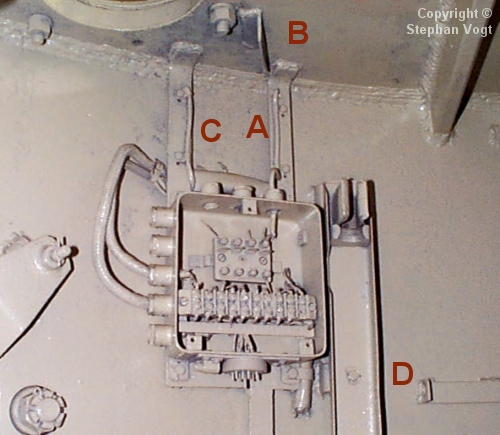
Tiger "712" has been overpainted and has lost many fittings, but it illustrates that the scaffold was welded only to the roof above and the turret ring below. The power lead at [A] is for the switch of the extractor fan, which was on the tab at [B]. The power lead at [C] is for a smoke generator trigger box. We can see at [D] that non-electrical equipment is still bolted or welded to the wall.
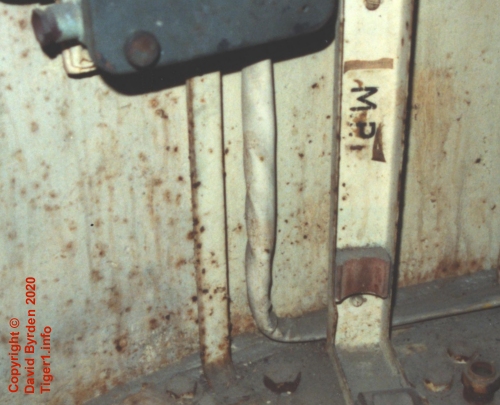
Returning to the better preserved but very dusty Tiger "131", we can see how all of the other cables from the Kasten 5c were now routed along the turret ring in a sleeve, no longer fixed to the wall.
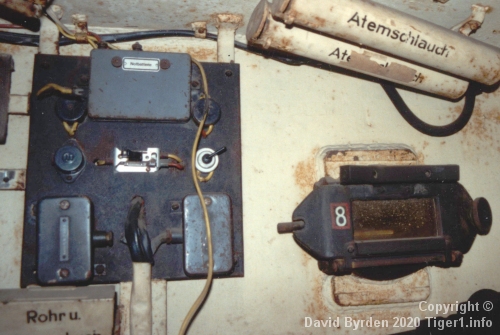
A large circuit board, to the left of the gunner, was the main improvement. The cable sleeve from the Kasten 5c came up from the turret ring to terminate at this board. Most of the turret's electrical components were now on this board rather than the wall. This example in Tiger "131" has some detached wires hanging loose.
Power leads for two nearby lamps emerge from behind the top of the board, coloured yellow or red. Others descend in the cable sleeve to run forward along the turret ring. The thick black sleeve runnng along the roof contains three trigger leads for smoke generators. But this is "131", an "Early" Tiger, and in the "Initial" Tigers that we are discussing it did not come from the left of this photo. It came up from the turret ring in the yellow sleeve with the other cables, going behind the board to reach the roof.
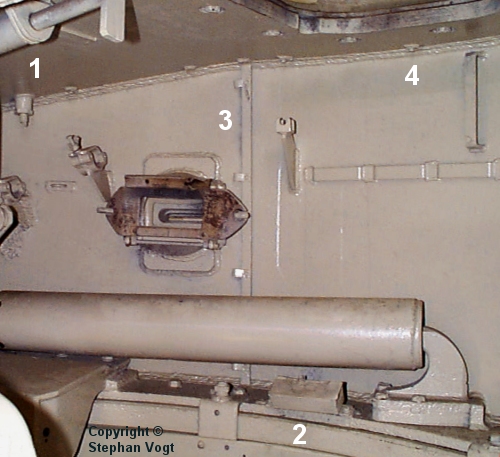
There were two such black cables, originating in the smoke generator trigger boxes. This is the right side of Tiger "712" [1] . There is a trigger box at [2]. Its cable sleeve ran up the wall, clipped to the metal strip at [3], then went to our left, exiting the turret at [1]. As for the box' power lead, it came from the Kasten 5c as mentioned already. It ran along the edge of the roof in clips such as [4] and descended along the metal strip to reach the box.
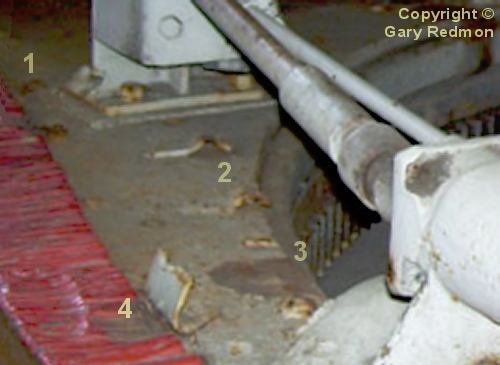
The other trigger box is no longer present in Tiger "712", but looking through the hole cut in its wall we can see where that box once was, mounted on the supports at [2]. There was a clip at [3] that guided the box' power and trigger cables to the circuit board, whose supporting leg has a stub remaining at [4]. Meanwhile, three other leads ran alongside the wall, held by clips including [1].
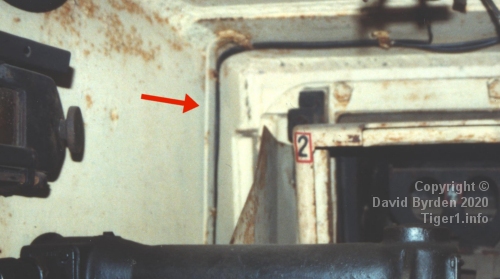
Those three leads ran up the forward wall in another cable sleeve on another metal strip. This photo shows the same feature in Tiger "131".
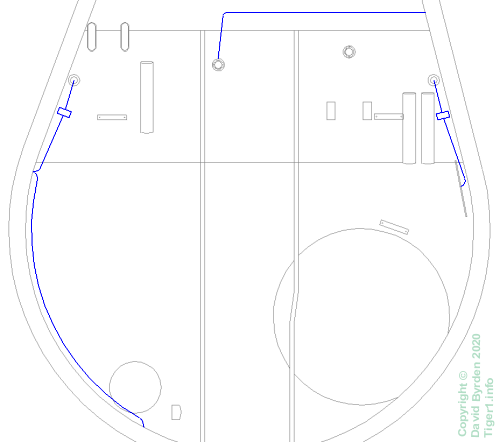
This is the trigger circuitry on the turret roof, as seen from below. The circuit board is by the wall on our right. Wiring is drawn in blue and is mostly for the smoke grenade system, but at the front of the roof (the top of this diagram) is the trigger lead for the main gun.
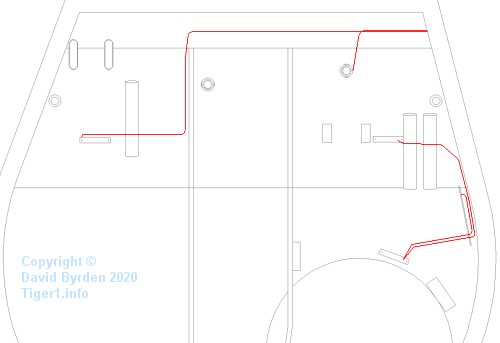
This is the layout of the lighting circuit wires. Three roof lamps and a power socket for the telescope lamp are supported.
This layout of turret wiring was used until the smoke generator trigger boxes were moved to the roof, a feature of the "Early" turret wiring.
[1] Survey of Tiger 250031, by Stephan Vogt
[2] Survey of Tiger 250122, at Bovington museum, by David Byrden